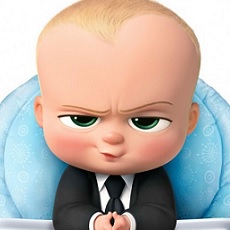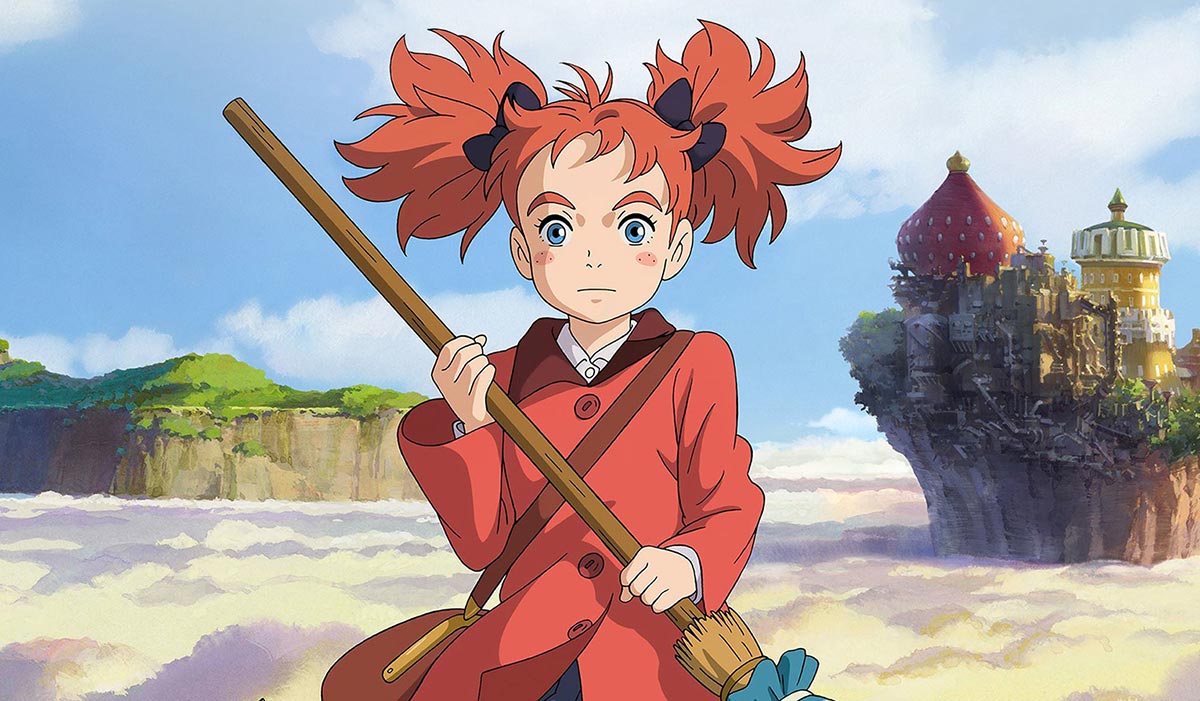Children’s Television Workshop/Bill Melendez Prods (April 1 1979), Alpha Omega/Sesame Workshop (August 16 2004), single disc, 95 mins, 1.33:1 original full frame ratio, Dolby Digital Mono, Not Rated, Retail: $24.95
Storyboard:
Set in both our “real world” and the magical Narnia, this animated version of CS Lewis’ evergreen story opens on a cold, wet day in a house in the country. Though never mentioned in the film, the four young human child protagonists of the story have been sent away from war torn London to live with a kindly old Professor, who fills their heads with wondrous tales of far way lands. On this cold day, Lucy, the youngest of the four children, finds herself hiding in an old wardrobe during a game of hide and seek. Heading deeper and deeper into the wardrobe, she suddenly funds herself popping out the other side…into another world entirely! Meeting the sweet Mr Tumnus, he warns her quickly to get back where she belongs, before the evil White Witch discovers her existence. Telling the other children once back in the real world about her adventure, she is teased by brother Edmund, who says it’s all in her mind. Too curious to let it go however, Edmund checks the wardrobe himself and comes face to face with the White Witch, who bargains with him to bring his siblings into her world so that she can destroy them, unbeknownst to Edmund.
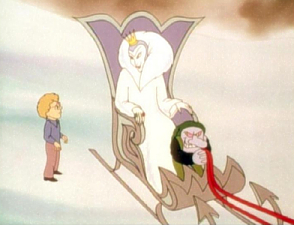
Once all four children have entered Narnia, Edmund disappears and attempts to lead them into a trap. The remaining three meet Aslan, an amazing and powerful beast who embodies the true spirit of Narnia. With the children’s help, he believes he can restore the land to its original splendor, something that has become more and more tarnished since the White Witch proclaimed herself queen by force. Setting out to defeat the Witch and rescue Edmund from himself, the children find themselves up against the Witch’s considerable army, who all fight under fear of being turned into stone. Finding Edmund, the children learn about the prophecy that can vanquish the White Witch forever, and she knows that if the humans reach her castle and sit upon the four thrones, her rule will be over. Reunited, the children discover that Aslan has made the ultimate sacrifice to save Edmund and must face the Witch with their own rebel army in a final battle for power on their own. Aslan is gone…but is all as it seems?
The Sweatbox Review:
With the release of the big-budget version of CS Lewis’ The Lion, The Witch And The Wardrobe a clear attempt by Disney to jump on the Lord Of The Rings bandwagon (having turned down the chance to produce Peter Jackson’s epic trilogy), what better occasion is there to look back at a previously animated version? As with The Lord Of The Rings again, this book, actually the second in a series of novels based in the land of Narnia, was adapted in the late 1970s by a maverick animation director, and saw only limited success, which put an end to a proposed series of films.
In truth, this version of the story is pretty tight, and retains the feel of the original, and while the animation cannot be classed as fluid, it’s way above the heavily rotoscoped approach that Ralph Bakshi took on Lord Of The Rings. The film was, at the time, one of the biggest budgeted films made for television, and was the first animated full-length feature created directly for the small screen. Written by CS Lewis in the 1950s, the Narnia book series was itself a knee-jerk reaction to Tolkien’s The Hobbit and The Lord Of The Rings. Lewis and Tolkien were members of the same gentlemen’s club, Oxford’s literary circle The Inklings, and Lewis would often spur Tolkien on, discussing the characters and situations of Middle Earth, and ribbing him for taking it all so seriously. It was during Tolkien’s immersive process in writing the Rings cycle of books that Lewis felt a little shut out, having given him ideas and felt responsible for pushing Tolkien to ultimately write the best fantasy story anyone has ever attempted. It was also Lewis’ sarcastic remarks, it must be said, that also stimulated Tolkien to actually finish the thing, since he almost abandoned it many times (it’s also said that Lewis inspired the character of Treebeard in Tolkien’s trilogy).
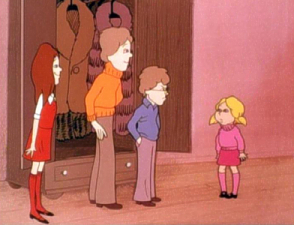
With The Hobbit already a success and The Lord Of The Rings looking as if it would recapture that magic in its pages, Lewis set about “competing” with his friend and created his own world and series of books, The Lion, The Witch And The Wardrobe being the first, most famous and well-read. The series actually begins with The Magician’s Nephew, a later book that works as a prequel, setting up the land of Narnia before the events in Lion, Witch And The Wardrobe take place. Being a Christian, Lewis’ books are filled with references to those beliefs, with Aslan, the magnificent lion hero of the story, very much a Christ-like figure, and it is no surprise that the few places this animated title can be found is online at various Christian-approved websites. In fact, though the disc was released almost exactly one year ago, there are still those who do not know it exists, and until recently your best bet for buying a copy was likely through eBay though a subsequent re-release has become more widely available.
Packed into just 90 minutes, there’s a deep level of plot to be getting on with, and the film does do justice to the source material. Despite being supposedly British, the kids have quasi English-American accents, which do nothing to detract from the overall tone, but can seem out of place at times. Among the voices are a number of folks who have gone on to (or come from) nowhere, with only Victor Spinetti being a cast member of any real note, having appeared in the 1960s Beatle films A Hard Day’s Night, Help! and Magical Mystery Tour, as well as kids’ fare such as Digby: The Biggest Dog In The World and The Little Prince, the animated SuperTed television show, The Princess And The Goblin and The Secret Garden.
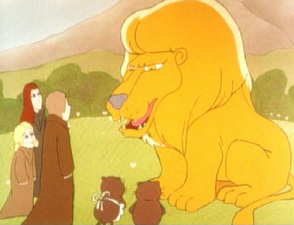
The film was produced by The Children’s Television Workshop, who at the time were having major continuing success with their long-running property Sesame Street and had just made the then-recent series, The Electric Company, which took an entertaining approach to teaching kids by having educational comedy sketches mixed in with cartoons such as Road Runner and Spider-Man. An offshoot idea from that show, The Lion, The Witch And The Wardrobe was considered as a project that would get kids interested in reading, and as such was awarded the seal of approval from the now defunct National Education Authority. Co-produced between the US and the UK, the film was helmed by Bill Melendez.
I’ve never had much time for Melendez, personally. His whole career seems to be about taking other people’s work and inspiration and turning them into his own projects. Most of my aversion towards him comes from his reputation as a Disney bad-mouther: if you need anyone semi-famous in the animation industry to put a mark against Walt, well, here’s Mr Rent-A-Quote. Melendez got his start at Disney, but a couple of run-ins with the boss seems to have shaped his own view of Walt and the company – something he feels intent on sharing with anyone who’ll listen. His most notable work over the years has been taking Shultz’s Peanuts strips and creating the animated films and television specials based around those characters, and not once do I know of him creating stories and characters from scratch, working through the Golden Age of Warner Brothers cartoons (under Bob McKimson) and moving over to a short stint on Columbia’s Gerald McBoing Boing, before starting his own company and producing, among the Charlie Browns, a couple of early Garfield specials.

That said, his directorial work here is very good, especially considering the time and budget constraints he and his crew were under. In places, it’s as good as television animation gets, though there are a few careless and easily fixable mistakes that slightly mar the overall quality. It’s not in the Disney league by any means, perhaps comparing favourably to the Rankin/Bass Lord Of The Rings films The Hobbit and The Return Of The King, with some fine designs that really suit the material. Even better is the music, by Michael J Lewis (no relation!), another name that seems to have been unable to build on the terrific work he puts in here. The music is exciting and melancholy at the same time, bringing to mind such scores as The Dark Crystal, Return To Oz and The Last Unicorn, and it’s a score that haunts and has stayed with me after all these years.
Being a television piece, the music is not as full or lush as those films, but given that he was working with a limited orchestra, there are some pretty big sounding themes in here; something that the big-budget re-make failed to make much of an impact with. The Lion, The Witch And The Wardrobe never comes off as stuffy as the reasons behind making it might suggest. It’s an exciting, deeply layered plot, carried off with more than a modicum of decent production value and ambition. While the new film attempted to sparkle with all the bells and whistles, this little version can more than hold its own, and hopefully will find a few new fans in this disc incarnation (if any of them can find the thing)!
Is This Thing Loaded?
While it would have been nice to hear from Melendez at the very least, it seems this was an independent release (licensed from the Sesame Workshop) interested only in getting the title out while the hype was building. Therefore, this is as bare bones as it gets, and since this was not a theatrical release, there’s not even a missing trailer to complain about!
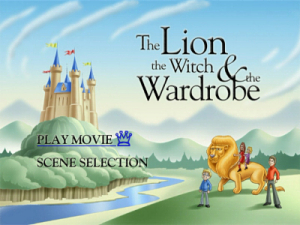
The same edition was re-issued in November 2005 in time to cash in on the big Disney version’s theatrical outing, but if you can play multiregion titles, the UK edition from Optimum adds a veritable wardrobe full of extras including commentary from Bill and Steve Melendez, an interview with Steve and storyboard comparisons including a deleted scene – well worth picking up for the luxury slipcase alone!
Case Study:
Though this is a limited, independent issue, kudos to Tapeworm for providing a chapter insert, which is more than some big studio titles do sometimes. Nicely laid out, the film has been indexed with 19 chapter points.
Ink And Paint:
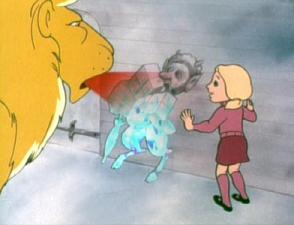
Presented full-frame, rest assured that, as a television production, this is the original aspect ratio. The Lion, The Witch And The Wardrobe premiered on CBS (in the US) and ITV (in the UK) on April 1 1979, and was never seen theatrically. The image here seems to be from a PAL master, and since it seems much of the production was completed in the UK, it is more than likely that this is the correct format. There are certainly no objectionable artefacts arising from the conversion, though the transfer of an original film print shows up the many speckles that begin to appear around the reel changes: this is showing its age. When I first saw this disc, I did think that asking for a full restoration probably wouldn’t benefit anyone, but the UK disc from Optimum does indeed give the film a light remaster to iron out some of the glitches. Nonetheless with this US edition, the commercial fades are handled well, and do not suffer from the usual “break syndrome”, where the story stops all too suddenly to make way for “important messages”.
Scratch Tracks:
This is an interesting one! As I mentioned above, the cast here seems to be a mix of British and American voices, with even the Americans sounding British in their pronunciation. At the time of this disc’s release, I could have sworn that I did remember seeing an alternate, totally British version, which was infinitely superior in terms of performances and featured better-known character actors. With the release of Optimum’s UK special edition, the answer became clear: two versions were mixed for each country (Optimum’s disc retains the “British” track only). Whereas many of the characters (the White Witch, Aslan, Mr Tumnus) have the same voices in both editions, Melendez explains the changes in his commentary on the UK disc. As for this one, it’s the hybrid track all the way, and unfortunately the audio here sounds a little thin, though it’s clean enough and serves the production well, being the only place to hear this version of the soundtrack.
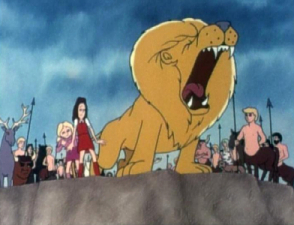
Final Cut:
For nostalgia fans, The Lion, The Witch And The Wardrobe is a must, though I was thrown by the strange mix of US and English-sounding voices at first. I was still transported to Narnia though, and for smaller children, this really is a great way to introduce not only the CS Lewis books, but the fantasy novel genre in general. Whereas later Narnia books get entrenched more heavily in the real aspects of life, death and politics, The Lion, The Witch And The Wardrobe encompasses much more of a light-hearted, magical feel, without those burdens. As a film, this animated version works well in its own right too, never outstaying its welcome and pushing the plot ahead to the next moment. It’s the story that counts, of course, and any lack of perfection in the animation is overcome by the dense structure of the screenplay, all wrapped up in a tidy 90 minutes or so.
 | ||
 |







